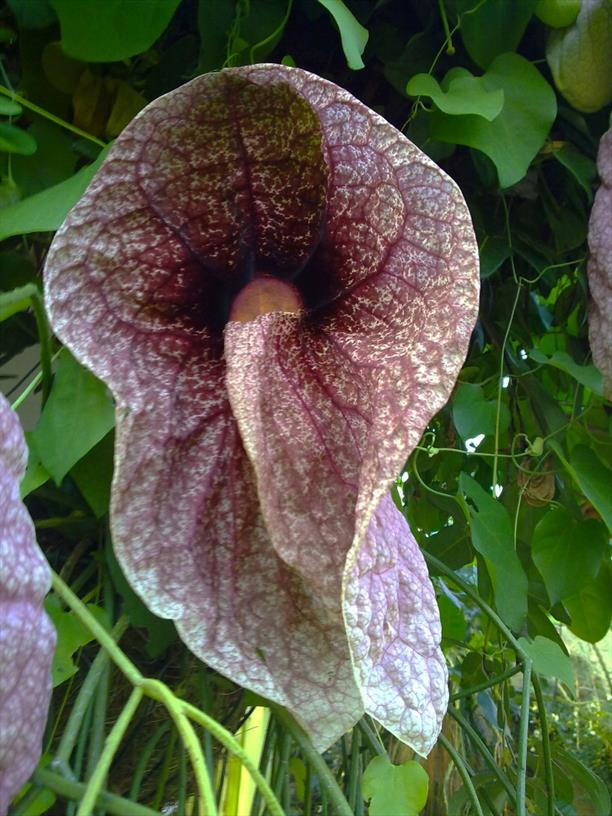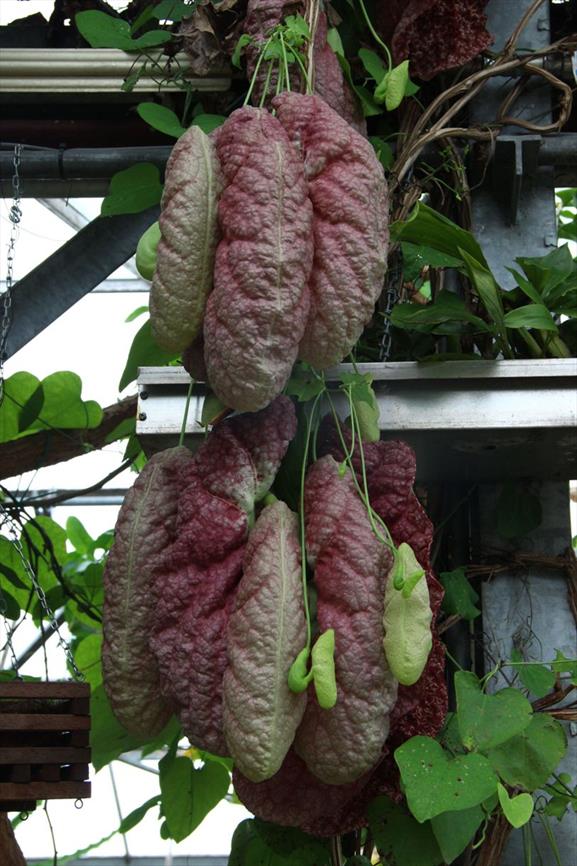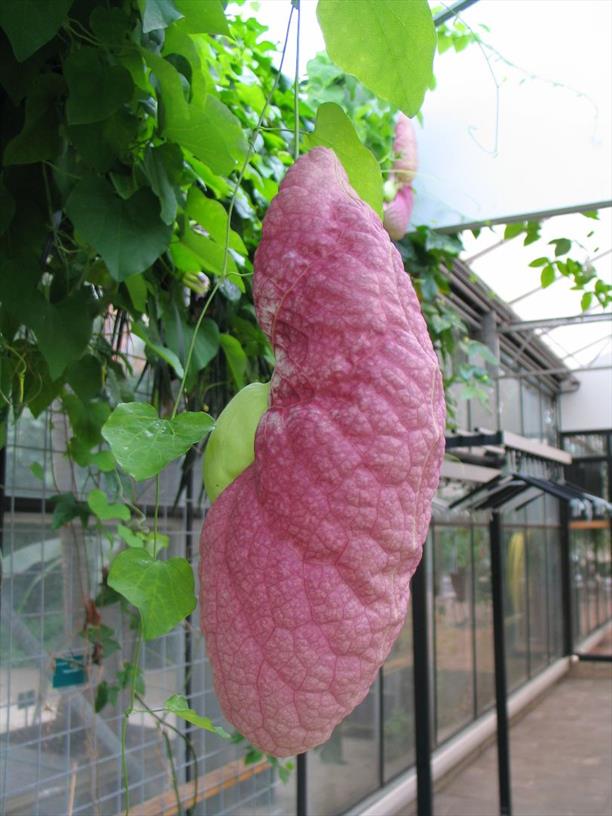Brazilian Dutchman's-pipe or Giant Pelican-flower or Calico flower
Aristolochia gigantea
Birthwort family (Aristolochiaceae)
An enormous (ex)stinker
In its native habitat of South America, this vine can climb into trees to heights of 10 m. The flowers are, as its scientific name implies, gigantic. They can grow to 30+ cm and resemble large pieces of rotting flesh hanging amongst the leaves. In the wild flowers exude a foul stench that attracts flies responsible for pollination. The specimen growing in the Utrecht Botanical Gardens is a mutation that does not produce a foul odour so that visitors can marvel at the flower without risking the danger of passing out from the stench.
In the Netherlands, birthwort or Dutchman’s pipe, (Aristolochia clematitis) can be found e.g. in the dunes. This species gets its vernacular name from the flowers that resemble an old-fashioned Dutch pipe.
Themes
Crown jewel in the Utrecht Botanic Gardens.
The giant dutchman's pipe releases a stench of carrion that attracts flies, which act as pollinators. Some say the flowers smell more like lemons.
When planted in North America and Central America, the pipevine swallowtail butterfly (Battus philenor) confuses A. gigantea with its native host plant and will lay eggs on it. Although the eggs hatch the caterpillars cannot survive on the foliage past their first instar and so don't reach maturity.
The flower is over 36 cm long.
Details
| Description: | Woody climber, 8-12 m. |
|---|---|
| Distributions: | Brazil |
| Habitat: | Rainforest. |
| Year cycle: | Perennial (polycarpic evergreen) |
| Hardiness: | 50 - 59 f (heated glasshouse - subtropical) |
| Flowering period: | Juni - augustus |
| Flower color: | White, yellow, brown |
| Notes on flowers: | Individual flowers have an s-shaped calyx tube, with no distinct petals and sepals, and can be white, yellow, brown or maroon, often speckeld; the ovary is inferior. |
| At its best: | Juni - augustus |


